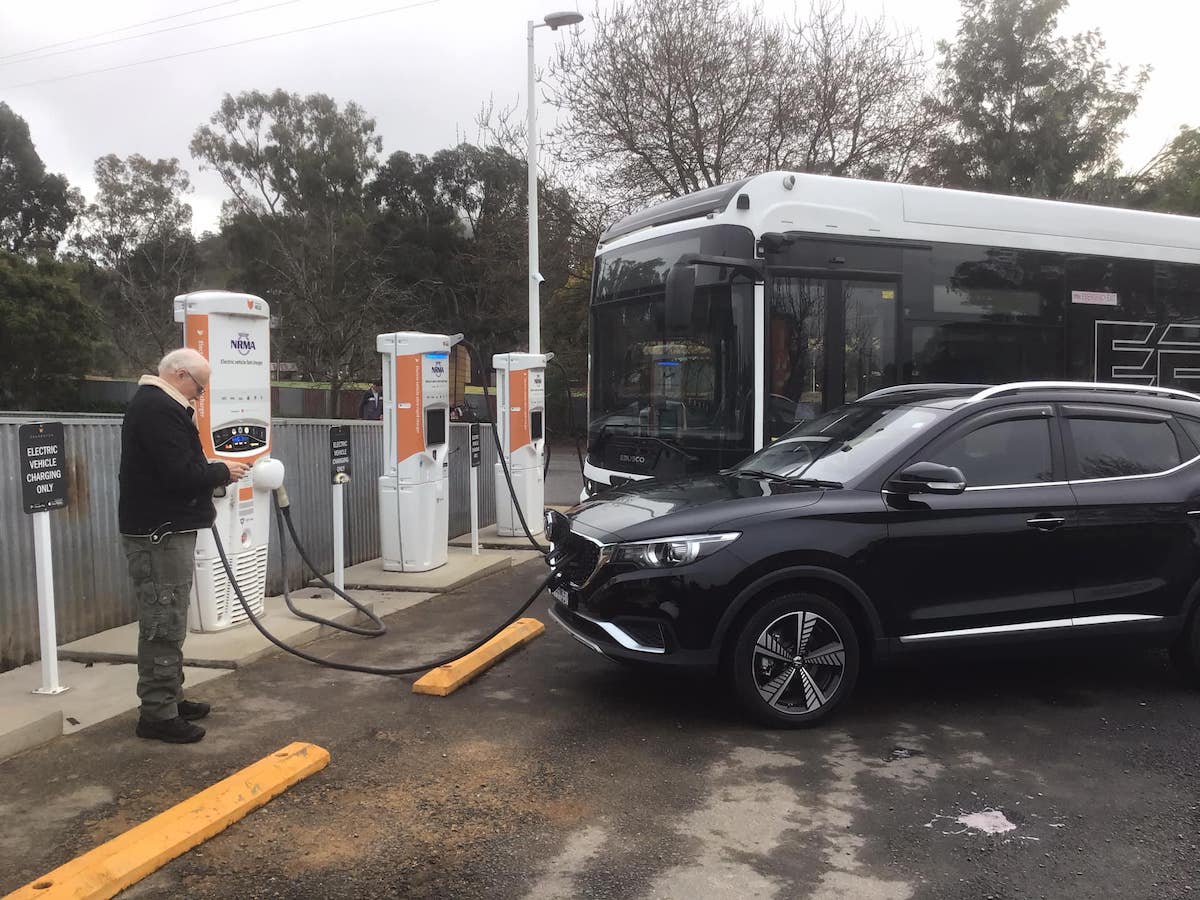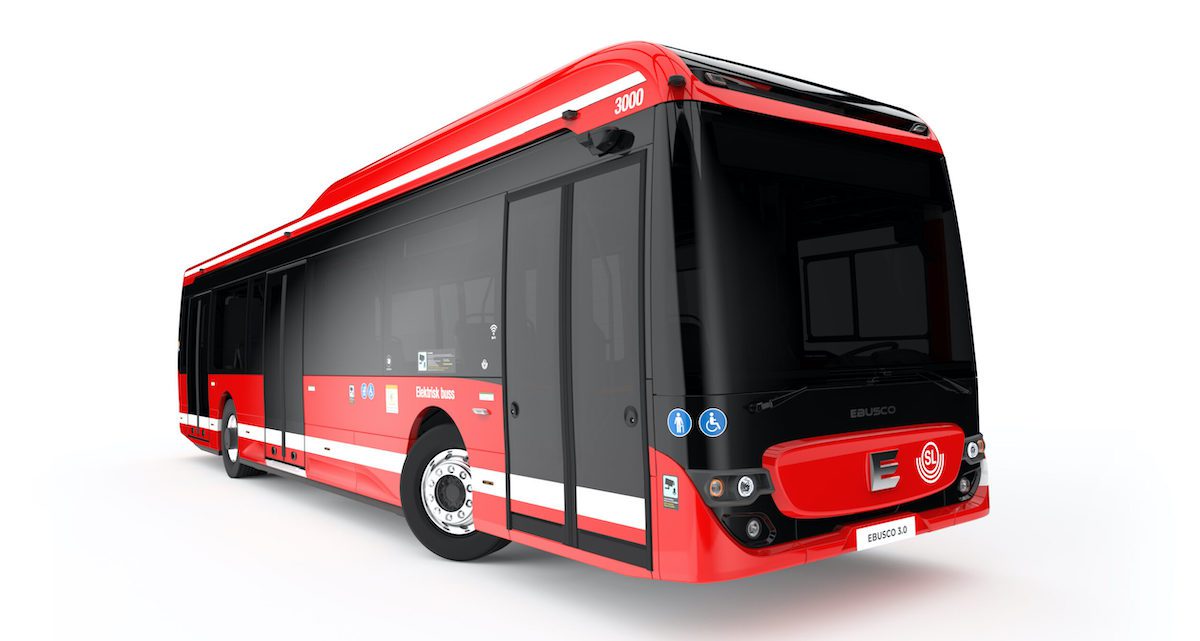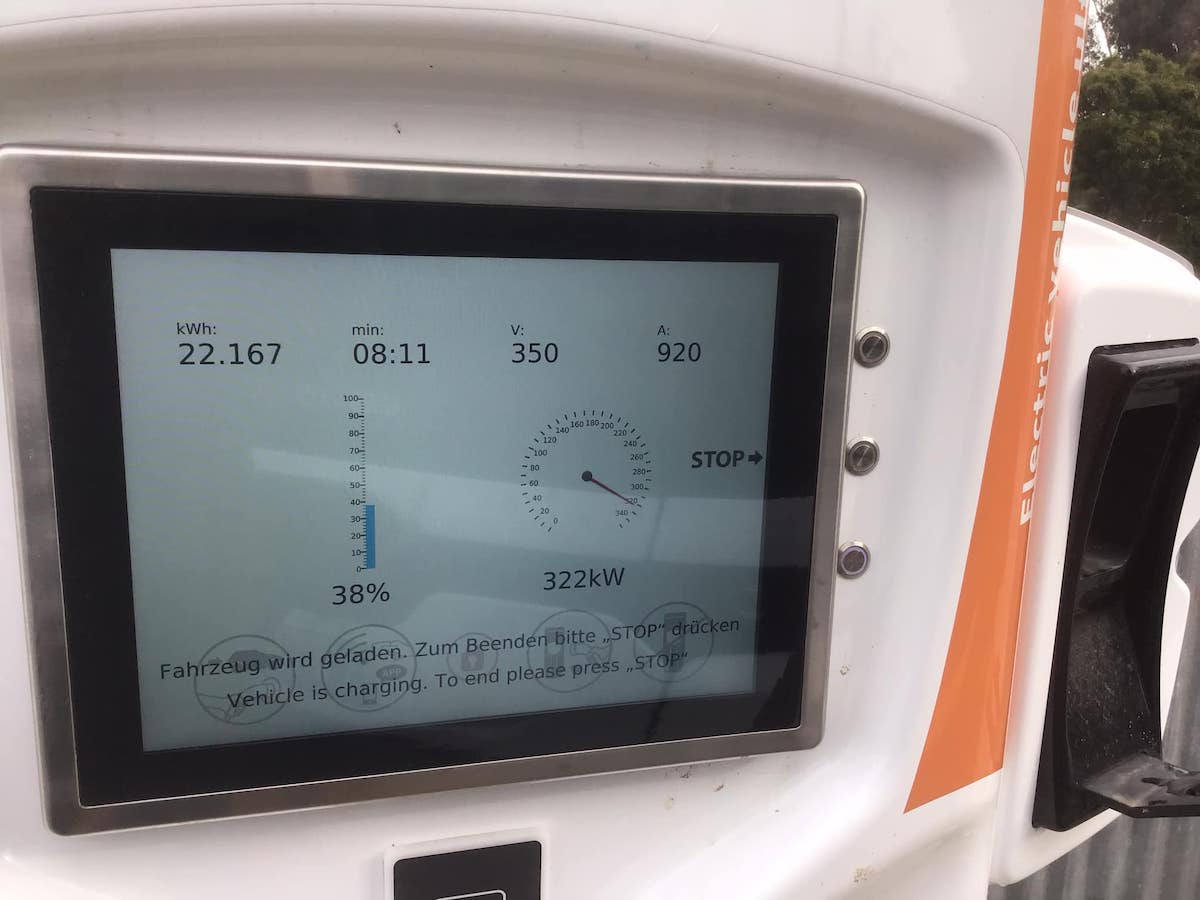An electric bus has been photographed plugged into a NRMA fast charging station in Gundagai, 160 km west of Canberra in regional NSW.
The images were posted by Bill Gresham on the CanberraEV Facebook group. The bus is a demo destined to be tested out by Sydney bus operators who are looking to electrify metropolitan bus fleets.
The 12.5 metre long bus, made by Dutch electric bus manufacturer Ebusco, has 424 kWh of CATL battery capacity with 6 packs on the roof and 6 in the rear of the bus. The bus has a range of 350km however it will get upwards 450km in city driving thanks to regenerative braking.
Ebusco has another model, the 3.0, which will get up to 700km on a single charge and carry up to 150 passengers.
Australia is a global laggard when it comes to electric buses. In April The Australia Institute published a report showing that just 200 out of 100,000 buses are currently electric making up just 0.2% of the nation’s entire bus fleet.
The Australia Institute says that electric buses are commercially available, economically viable, popular with commuters, and have multiple advantages over diesel-fuelled buses, including reduced CO2 emissions, noise, and air pollution.
Electrifying the 100,000 bus fleet is a huge opportunity for Australia, not only to reduce greenhouse gases but to significantly reduce the toxic air and noise pollution spewing out of diesel buses in Australian cities.

The Driven reached out to Ebusco and spoke to Don Imrie who was driving the all-electric bus from Melbourne to Sydney to learn more about the bus and why he was making the almost 1000 km journey.
“The drive primarily was to re-locate the bus from Melbourne to Sydney, so it can be displayed to various bus operators in the Sydney metropolitan area. However, I also used the trip to discover more about the handling of the bus, the range, and to discover more on the charging infrastructure available,” said Imrie.
He said the bus was built specifically for the Australian Market and is the only right hand drive model of the Ebusco 2.2 in existence. The Dutch-based Ebusco delivered its first bus in 2013 and has roughly 500 in service. Ebusco is growing rapidly finishing 2022 with an order book of roughly 1500 more.

Imrie said while he enjoyed the drive, there were some challenges with charging the 12.5m bus.
“All of the charging infrastructure available is built for cars, no consideration has been given for heavy vehicles at all. After 280 kms I had used 70% of the batteries and, to be safe, I like to re-charge the bus between every 250-300 klms,”

“I’m confidant (if the infrastructure was available), I could do 350 kms before charging the bus. That’s highway running, metropolitan running I’d except at least 450 kms.
“At each charging location I had good chats with car drivers. Being a bus it attracted attention as no one had seen a bus charging at those sites before.”
The Driven asked Imrie what the bus is like to drive and how the pricing compares to diesel buses.
“This bus is very easy to drive, the drivers cab has been extremely well designed and is very comfortable, after driving all day I was able to walk away without feeling tired, after driving a diesel bus over the same distance I often felt very tired afterwards.”
“Surprisingly the price difference is not huge, the initial purchase price is approx. $200k dearer, but there are savings over the life of the vehicle compared to a diesel bus, that counteract the purchase price.”
Imrie says the battery in the bus is large enough to operate for an entire metropolitan bus shift.
“I would expect the Ebusco 2.2 to travel 450 kms in the metropolitan area (I actually think it will do more). The battery will last a shift, most shifts are around 300 kms. A lot is down to how the bus is driven, it’s completely different to driving a diesel bus and driver training will become very important to get the best out of the vehicle.”

Daniel Bleakley is a clean technology researcher and advocate with a background in engineering and business. He has a strong interest in electric vehicles, renewable energy, manufacturing and public policy.

